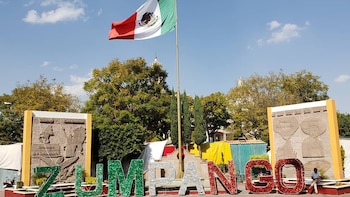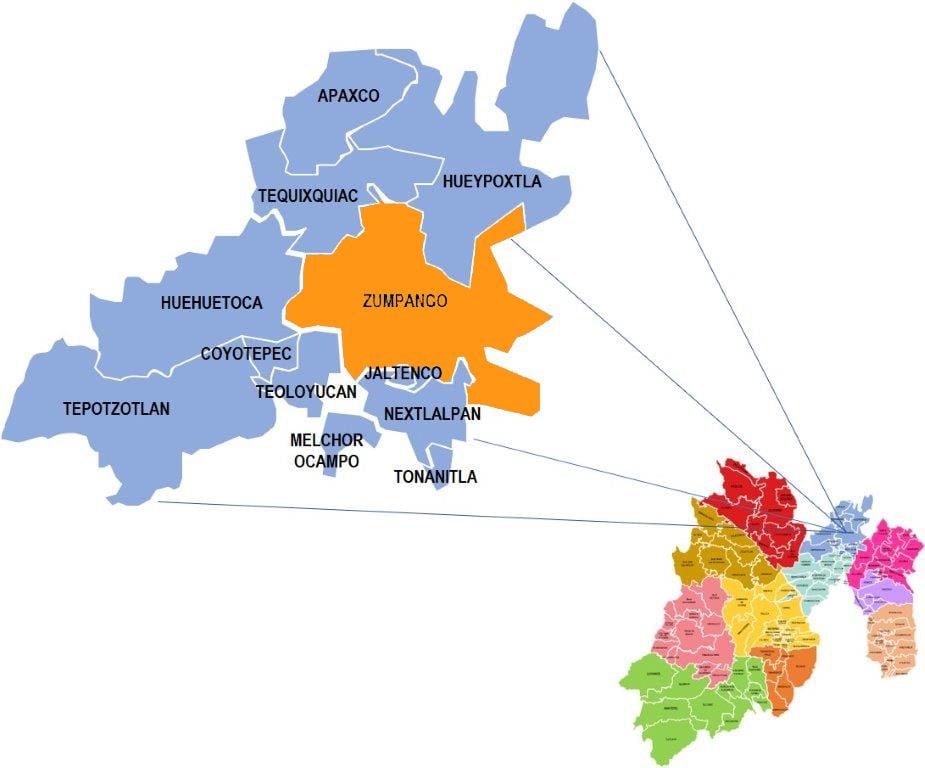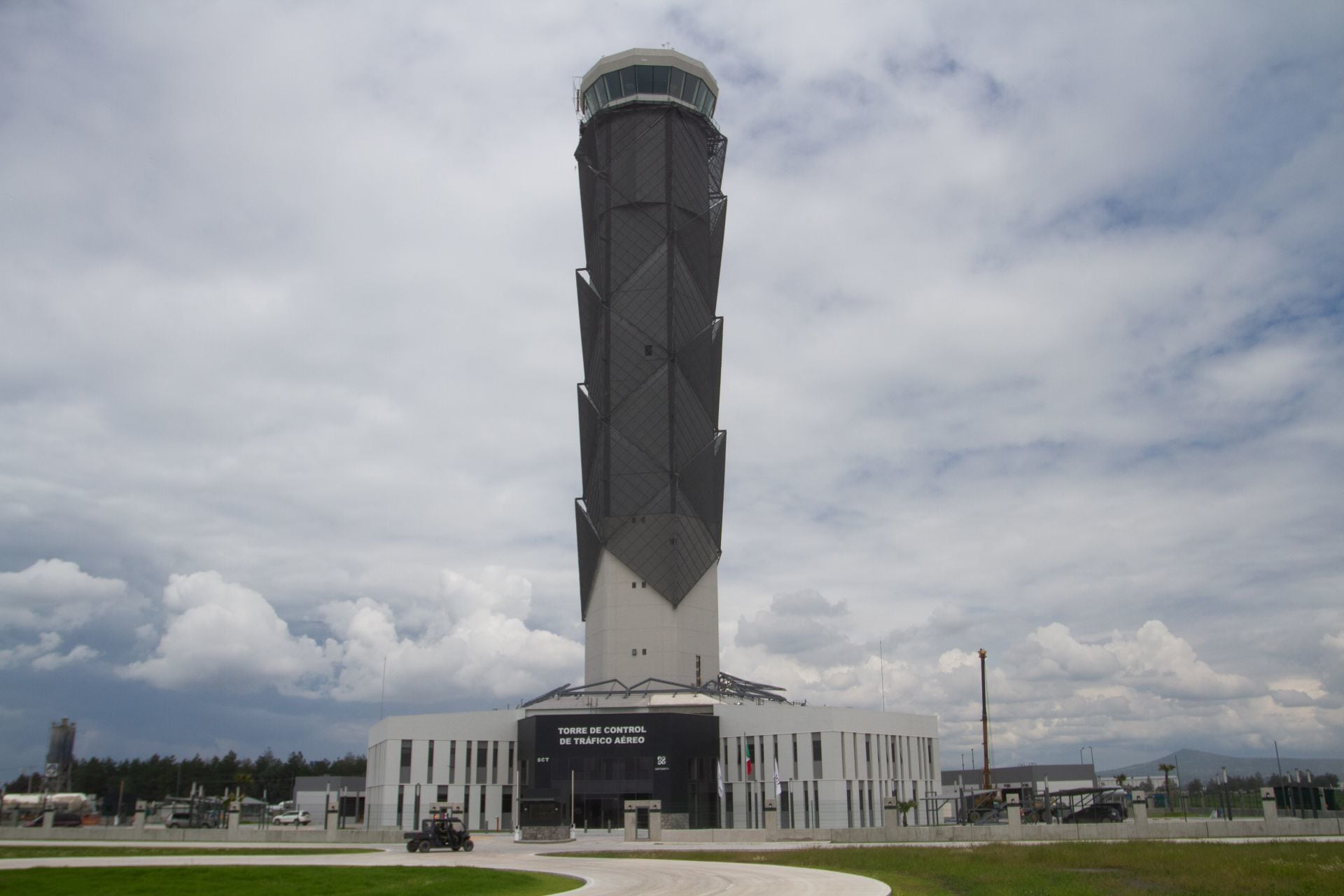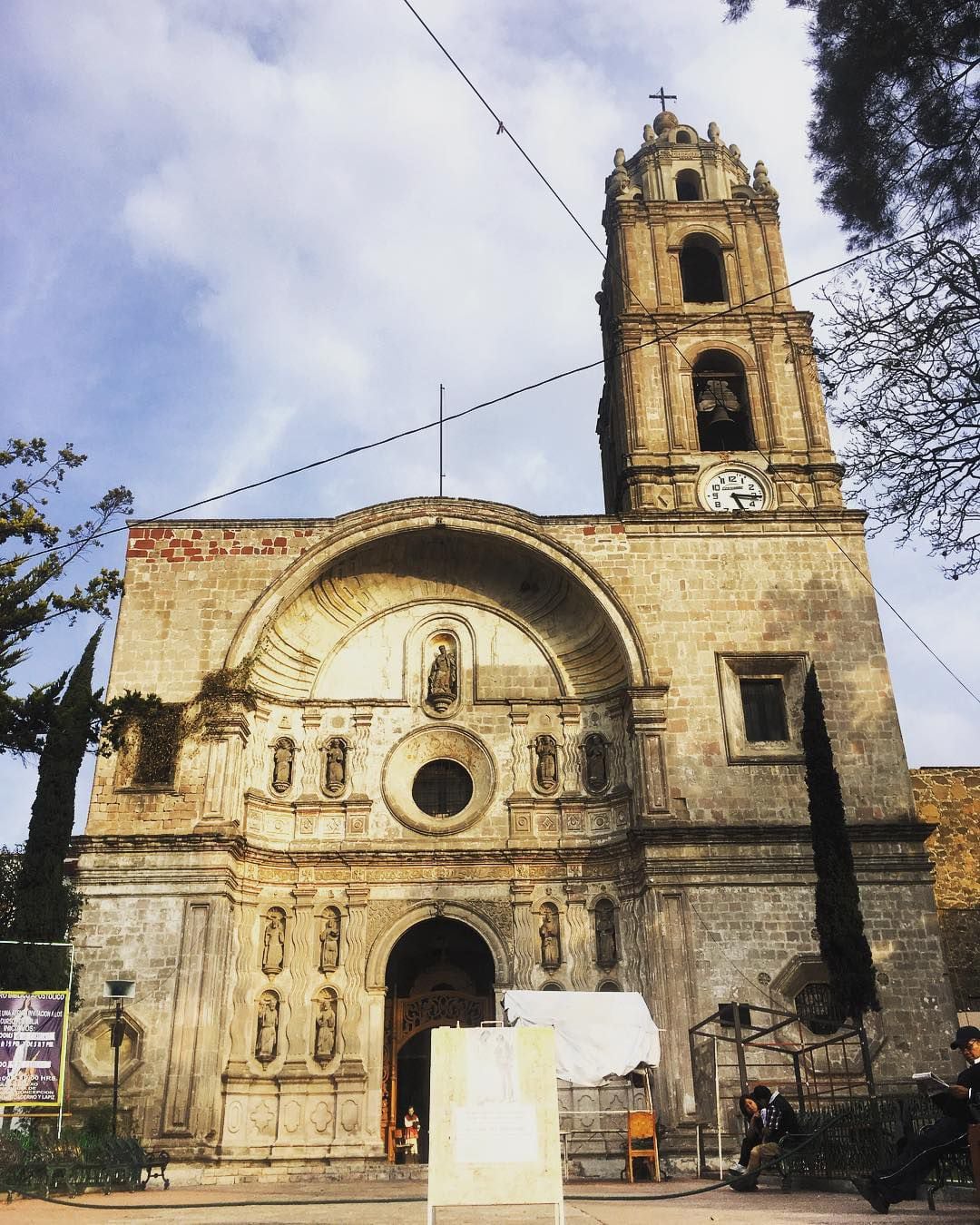
Zumpango is one of the 125 municipalities that make up the 22,500 square kilometers of the State of Mexico. It is a town that is located to the northwest of the state and borders the territories of Tequixquiac, Hueypoxtla, Teoloyucan, Cuautitlán, Nextlalpan, Jaltenco, Tecámac, Tecámac, Cuautitlán, Teoloyucan, Coyotepec, Huehuetoca and the state of Hidalgo. The property is 54 km from Mexico City.
The site not only stands out for hosting the new Felipe Ángeles International Airport (AIFA), but also stands out for the great historical and cultural trajectory that has shaped the identity of its inhabitants.
The pre-Hispanic roots can be seen from the name, because according to the National Institute for Federalism and Municipal Development (INAFED), the name is a Hispanic decomposition that actually comes from the Nahuatl Tzompanco, which is composed of the expression Tzompantli which means “row of hair” and Co which refers to a” place, place or space occupied”. Specialists have determined that the general translation is “Place of the tzompantli”.

On the other hand, in the 19th century, the surname “Ocampo” was added to him in honor of the liberal politician and scientist Melchor Ocampo, one of the most prominent figures of the Juarista period, who was also governor of the state of Michoacán in 1846.
For a long time it was determined that the origins of this place date back to 200 BC, however, the findings of the remains of mammoths, giant armadillos, sloths, fossils of camels, horses and a saber-toothed tiger that were recently found during the construction of the AIFA, revealed that part of the territory was inhabited since Prehistory.
These discoveries add Zumpango to the list of the oldest municipalities in EDOMEX. However, the first settlements of which a formal record and analysis are due to Jeffrey R. Parsons, an American archaeologist who dedicated himself to studying the locality. After his research, he submitted a report to the Department of Pre-Hispanic Monuments of the National Institute of Anthropology and History (INAH) in 1974.
Parsons divided the pre-Columbian settlements into 5 phases, the first being called Petlachique-Tzacualli, which dates from 200 BC to 100 AD. During this period, settlements were recorded on the shores of the ancient Zumpango Lake.

The second was the “Classic Period (100-700 A.D.) in which there was “a surprising abundant dispersion of settlements, mostly all small.” At this stage, the regions of Tlamimilolpan, Xolalpan and Metepec began to be inhabited.
Due to its proximity to the state of Hidalgo, it is said that Toltec, Otomi and later Chichimeca groups arrived at the place. The third phase was called Coyotlatelco from 700 to 900 AD, during which time the arrival of inhabitants to the top of the Mesa Grande hill, next to Tequixquiac, was identified. The fourth was Mazapan (900-1100 AD) and the fifth and most important was the Aztec, from 1150 to 1520 AD.
INAFED explains that when he ruled the Tlatoani Tochpanehecatl of Tzompanco, he decided to give asylum to a migrant people “tenochcamexica who, grateful for their kindness, offered in marriage to Tlacapatzin, beautiful maiden for their son Iluicaltl, whose union came up years later Acamapichtli, the first tlatoani of the great Mexico Teno Ochtitlan”. Which means that part of the roots of the Aztecs were developed in this territory.

Later, with the arrival of the Spaniards and the fall of the Mexican Empire, Zumpango came under the administration of the municipality of Cuautitlán, which was governed by Spanish entrusters. It was until 1596 that Zumpango “became the head of Mayor's Office, joining the town of San Juan Zitlaltepec”.
The Zumpango Lagoon has always been one of the greatest treasures in the area, as it was a natural area that used multiple resources, specifically water. For this reason, Hernán Cortés took advantage of the place and turned it into an important economic center that was commissioned by the Spaniard Alonso de Ávila.
The role of the friars was also fundamental, since they were responsible for the tasks of evangelization and the construction of the Immaculate Parish of Conception in 1578, one of the most important precincts in the region that is currently located in the municipal seat.
Thanks to the struggle for independence, on July 31, 1820, Zumpango was declared autonomy and officially constituted as a municipality. Then, in 1847, the town stood out for its active participation in the American invasion. The same source points out that they also defended “in a patriotic, effective and brave way during the time of the French Intervention, (for that reason) Benito Juárez named the municipality “Zumpango de la Laguna, a free town”.

At the time of the Porfiriato, the Water Box was built, inaugurated in 1900 by Díaz, which “is part of the works on the Grand Canal and its function is to slow down and regulate the speed of the waters before they enter a 10-kilometer tunnel that flows into Texquixquiac, also the State of Mexico.”
It currently stands out for the manufacture of fireworks, as well as artisan workshops of glass spheres. In the same way, sites such as the Casa Cural and the Catholic temples of Santa Maria, San Juan Bautista, the Lord of the Barrio and San Pedro stand out.
According to the latest census, the population in Zumpango is 280,455 inhabitants, of which 48.8% are men and 51.2% are women.
KEEP READING:
Últimas Noticias
Debanhi Escobar: they secured the motel where she was found lifeless in a cistern
Members of the Specialized Prosecutor's Office in Nuevo León secured the Nueva Castilla Motel as part of the investigations into the case

The oldest person in the world died at the age of 119
Kane Tanaka lived in Japan. She was born six months earlier than George Orwell, the same year that the Wright brothers first flew, and Marie Curie became the first woman to win a Nobel Prize

Macabre find in CDMX: they left a body bagged and tied in a taxi
The body was left in the back seats of the car. It was covered with black bags and tied with industrial tape
The eagles of America will face Manchester City in a duel of legends. Here are the details
The top Mexican football champion will play a match with Pep Guardiola's squad in the Lone Star Cup

Why is it good to bring dogs out to know the world when they are puppies
A so-called protection against the spread of diseases threatens the integral development of dogs




